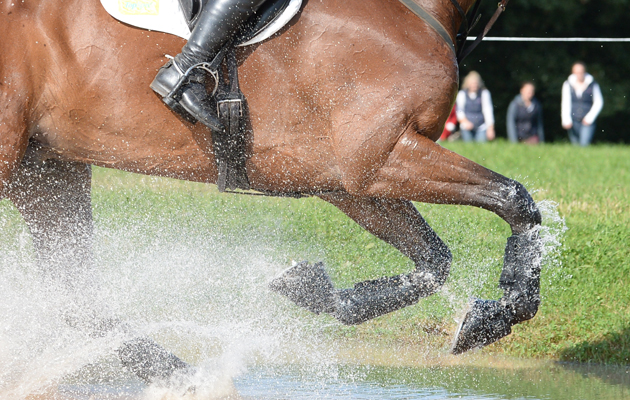In our exclusive video, eventing groom Debbie Carpenter explains how to care for tendons, knees and stifles after cross-country to help your horse recover from a busy competition day
The cross-country phase of eventing causes horses to exert themselves to the maximum and puts considerable stress on their bodies. Helping the horse recover quickly from their exertions is important and ensuring horse and rider are both fit enough for their level of competition is vital in avoiding unnecessary injuries.
Immediately after the cross-country phase, the horse’s temperature, pulse and respiration must be returned to normal as quickly as possible. In order to judge the horse’s rate of recovery, riders and owners need to know what is normal for the horse at rest.
Andy Bathe MRCVS, former vet to the British event team, says: “The quickest way to cool a horse off is to copiously apply iced water all over the horse’s body.”
Continued below…

9 common cross-country queries solved
We ask the experts to tackle some common cross-country problems, from dealing with green horses to keeping your horse focused
Andy says that the horse’s rectal temperature peaks 5-10min after it completes the cross-country. He recommends having two people to wash the horse down, one either side washing from head to tail, before scraping off excess water and starting again.
“Don’t scrap the water off until you reach the tail,” he says. “It needs to be on the skin long enough to cool the horse down.”
The horse should be walked until its respiration rate reduces to normal, and it can be a good idea to walk, wash and walk alternately until the horse has recovered.
Caring for the horse’s legs
Once the temperature, pulse and respiration have returned to normal, the focus turns to the horse’s legs. There is a huge range of products on the market designed to help a horse’s legs after exertion and everyone has their favourite.
Karen Coumbe prefers simple cold hosing or washing down with cold water as a good way of cooling the legs. Cool boots or bandages can also be helpful.
“Ice applied directly for more than 30min has the potential to burn the skin, and clay-based cooling products can mask a problem as it can be difficult to know what is going on underneath,” she says.
Andy Bathe does not mind the use of clay-based coolants, but stresses the importance of looking at the horse’s legs and feeling them very carefully first.
“Be careful that you don’t apply something over nicks and cuts. I would put on a layer of Vaseline first,” he says. “Don’t apply it immediately. Let the legs and tendons cool down first and wait until early evening so that any potential problems show up. Leave it on overnight, then wash the coolant off the following morning.”
Close examination of the whole horse the next day is crucial.
“Trot the horse up and check for stiffness, jarring and any swelling,” says Andy. “If it’s fine, turn it out into the paddock and let it walk any stiffness off — and if it isn’t 100% get it checked out by your vet.”
H&H 25 March 2004













